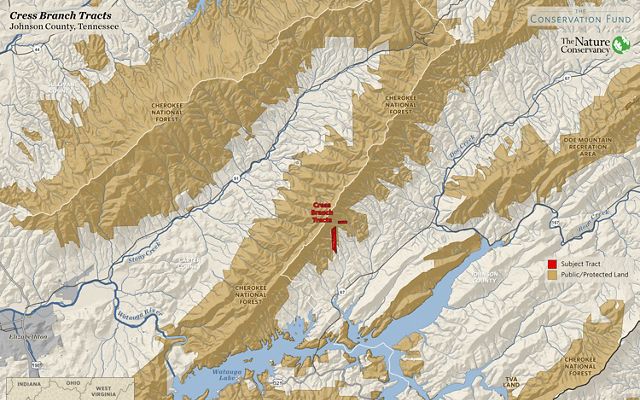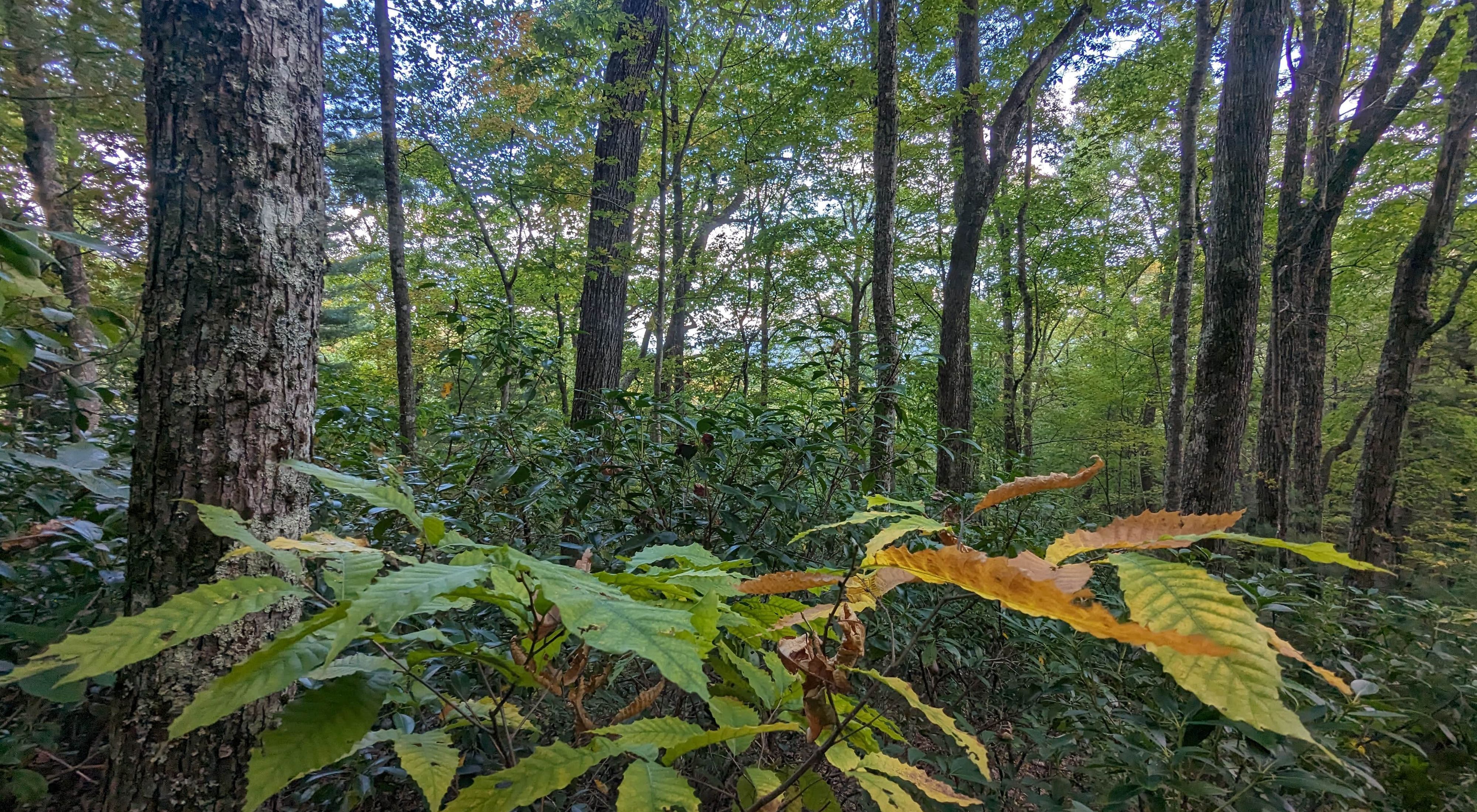Tennessee's Largest Public Land Holding Expands
The U.S. Forest Service and Conservation Groups Grow the Cherokee National Forest by 54 acres.
Media Contacts
-
Jessica Underwood
The Nature Conservancy
Phone: 404-313-0450
Email: j.d.underwood@tnc.org
The Nature Conservancy and The Conservation Fund (TCF) have completed an effort to conserve and transfer 54.5 acres of land in Butler, referred to as “Cress Branch,” to the U.S. Department of Agriculture Forest Service (USFS). The Cress Branch tract will grow the Cherokee National Forest (CNF) to an impressive 655,598 acres.
The CNF sits within a matrix of state and federal public lands and is the largest tract of public land in Tennessee, adjoining other national forests in Virginia, North Carolina and Georgia. The Cress Branch tract is surrounded on three sides by National Forest boundary.
“We’re excited that the Cress Branch property was acquired for its proximity to Wilderness and the Appalachian Trail,” said Michael “Mike” Wright, forest supervisor, Cherokee National Forest. “This parcel borders the Big Laurel Branch Wilderness providing public access and additional buffers to Wilderness and the Appalachian Trail.
The protection of this land was made possible by the federal Land and Water Conservation Fund (LWCF), which was fully and permanently funded by the Great American Outdoors Act in 2020. LWCF is a bipartisan program that conserves ecologically and economically valuable land across the U.S., including many of Tennessee’s iconic natural places. This project is located in Tennessee’s First Congressional District, represented by U.S Senator Marsha Blackburn, U.S. Senator Bill Hagerty and U.S. Representative Diana Harshbarger.

This region of the Southern Appalachian Mountains in Tennessee is of global conservation significance due to high terrestrial, aquatic and subterranean biodiversity, as well as resilient and highly connected forests that buffer the effects of a changing climate while providing key migration corridors for plants and animals. Visitors to the CNF can explore more than 600 miles of trails including 150 miles of the Appalachian National Scenic Trail, hundreds of miles of cold-water streams, seven whitewater rivers, three large lakes, 11 congressionally designated Wilderness areas, 30 developed campgrounds, 45 developed day-use sites and the abundant populations of wildlife. The national forest provides habitat for 43 species of mammals, 154 species of fish, 55 species of amphibians and 262 species of birds.
The protection of this land was also made possible through the Appalachian Trail Conservancy’s Wild East Action Fund and other generous supporters as part of their commitment to protecting this biologically rich area. The Appalachian Trail Conservancy’s East Action Fund seeks to accelerate the pace of conservation within the Appalachian Trail landscape.
“Conservation wins like this are possible thanks to successful partnerships between local landowners, Cherokee National Forest and our conservation groups,” said Zachary Lesch-Huie, Tennessee state director for The Conservation Fund. “We are excited to be a part of this successful effort. An important piece of Iron Mountain, within view of the Appalachian Trail and next to Big Laurel Branch Wilderness Area, is now protected for years to come.”
“The expansion of the Cherokee National Forest is another win for Tennessee and its visitors,” said Laurel Creech, state director for The Nature Conservancy in Tennessee. “I am proud of this collaborative effort because it illustrates how we and our partners work with conservation-minded land sellers to ensure their land can benefit nature and the people for generations to come.”
The Nature Conservancy is a global conservation organization dedicated to conserving the lands and waters on which all life depends. Guided by science, we create innovative, on-the-ground solutions to our world’s toughest challenges so that nature and people can thrive together. We are tackling climate change, conserving lands, waters and oceans at an unprecedented scale, providing food and water sustainably and helping make cities more sustainable. Working in more than 70 countries and territories, we use a collaborative approach that engages local communities, governments, the private sector, and other partners. To learn more, visit nature.org or follow @nature_press on Twitter.
